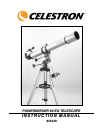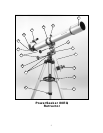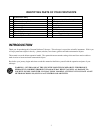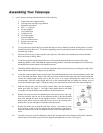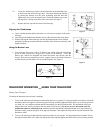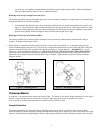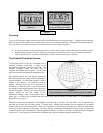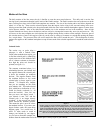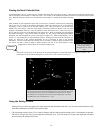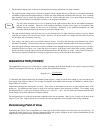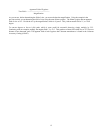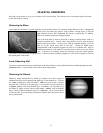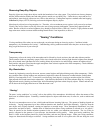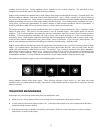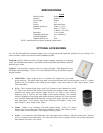
you want. For very small movements and fine adjustments, turn the right ascension cable. Unlike the declination
cable, the right ascension cable has 360˚ of continuous motion.
Balancing the Telescope in Right Ascension (R.A.):
The telescope should be properly balanced in order for it to move smoothly in both axes. Proper balance is essential if using
an optional motor drive for accurate tracking.
1. To balance the right ascension axis, move the counterweight shaft so it is parallel (horizontal) to the ground. (See
figure 5). Slowly release the right ascension knob and see if the optical tube moves. If the optical tube moves, then
slide the counterweight up or down the counterweight shaft until the optical tube remains stationary in the parallel
position to the ground. When this happens, make sure the counterweight lock is tight.
Balancing the Telescope in Declination (DEC):
The telescope should also be balanced on the declination axis to prevent any sudden motions when the DEC clamp is
released. To balance the telescope in DEC:
1. Release the R.A. clamp and rotate the telescope so that it is on one side of the mount (i.e., as described in the previous
section on balancing the telescope in R.A.).Lock the R.A. clamp to hold the telescope in place. Release the DEC clamp and
rotate the telescope until the tube is parallel to the ground (see figure 6). Release the tube — GRADUALLY — to see
which way it rotates around the declination axis. DO NOT LET GO OF THE TELESCOPE TUBE COMPLETELY!
Loosen the screws that hold the telescope tube inside the mounting rings and slide the telescope tube either forwards or
backwards until it remains stationary when the DEC clamp is released. Tighten the tube ring screws firmly to hold the
telescope in place.
Figure 6 - Balancing in Declination
Figure 5 - Balancing in R.A.
T
T
e
e
l
l
e
e
s
s
c
c
o
o
p
p
e
e
B
B
a
a
s
s
i
i
c
c
s
s
A telescope is an instrument that collects and focuses light. The nature of the optical design determines how the light is
focused. Some telescopes, known as refractors, use lenses. Other telescopes, known as reflectors, use mirrors.
Your telescope is a refractor telescope that use an objective lens to collect its light.
Image Orientation
The image orientation of any telescope changes depending on how the eyepiece is inserted into the telescope. When
observing through a refractor telescope using the star diagonal, the image will be right side up, but reversed from left to right.
However, when observing straight through, with the eyepiece inserted directly into the telescope, the image will be inverted.
6



